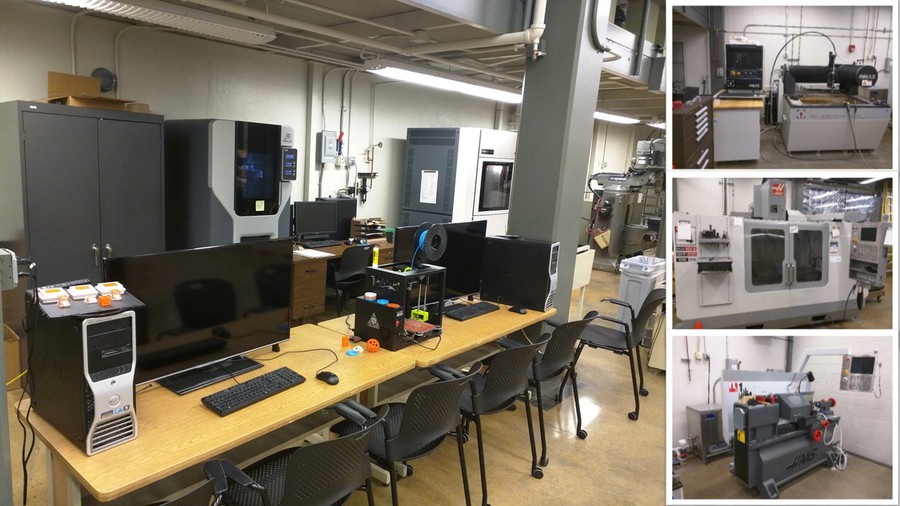Makerspace Profile
Overview
The MABE Maker lab originated as an educational tool to place Industrial grade advanced manufacturing equipment in the hands of engineering students. It is funded and supported by the Mechanical, Aerospace and Biomedical Engineering Department. The space is located in Dougherty Engineering Building, which houses the MABE Department.
Access
Students and researchers within the Department of MABE have access for school-sponsored (education or research) projects. Participants submit files online or come during open hours. The lab is open about 3 hours per day during the semester.
Tools, Materials and Resources
Fortus 250mc (FDM with ABS. 10x10x12 inch build volume)
Fortus 400mc (FDM with ABS, PC, Ultem. 14x16x14 inch build volume)
OMAX 2626 (Abrasive Waterjet, 26 x 26 cutting area
CNC machines (HAAS Lathe, Bridgeport Milling Machine (3 axis), HAAS Milling Center (4 axis) and HAAS Mini Mill (5 axis)
Access & Usage Costs
It is free to access the lab with supervision. User bring their own material for the waterjet and CNC equipment, but there is no cost to operate. All users must be trained to operate the equipment. Printing within the department is subsidized.
Management
The space is managed by Dr. Matthew Young, Eastman Assistant Professor of Practice. There is one part-time staff position and one GA position. The space is used with supervision.
Training
Users can be trained to operate the Waterjet and CNC equipment. 3D printing file preparation is taught in coursework and video tutorials are available.
Use and Activity
The space is used most heavily for mechanical engineering coursework and senior design projects. Graduate students also routinely use the equipment for fabricating components of their research.
Culture and Community
The MakerLab has been a key component for teaching product design and visualization skills as part of our core mechanical engineering curriculum. It has also served to provide hands on machining experience.
Challenges and Lessons Learned
Ensuring the safety of the students and equipment has been the biggest challenge with the space. We have been very conservative and deliberate about providing access to new equipment and providing adequate training. Our two biggest assets for development are a dedicated staff and a manageable website.
Advice to other Makerspaces
It is important that the space is well advertised, and that other faculty are aware of the space and its capabilities. Dedicated personnel are essential to ensuring safety and providing access to the space.
